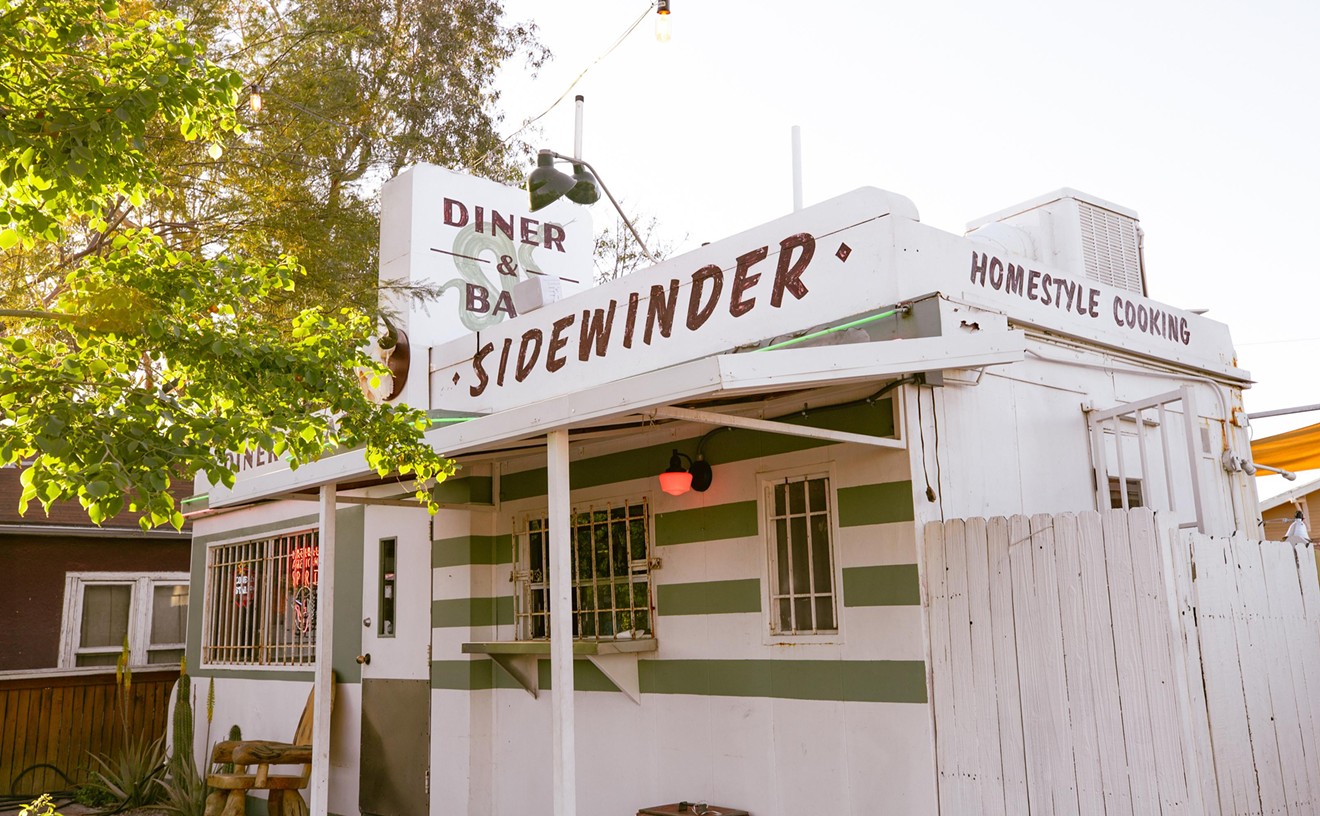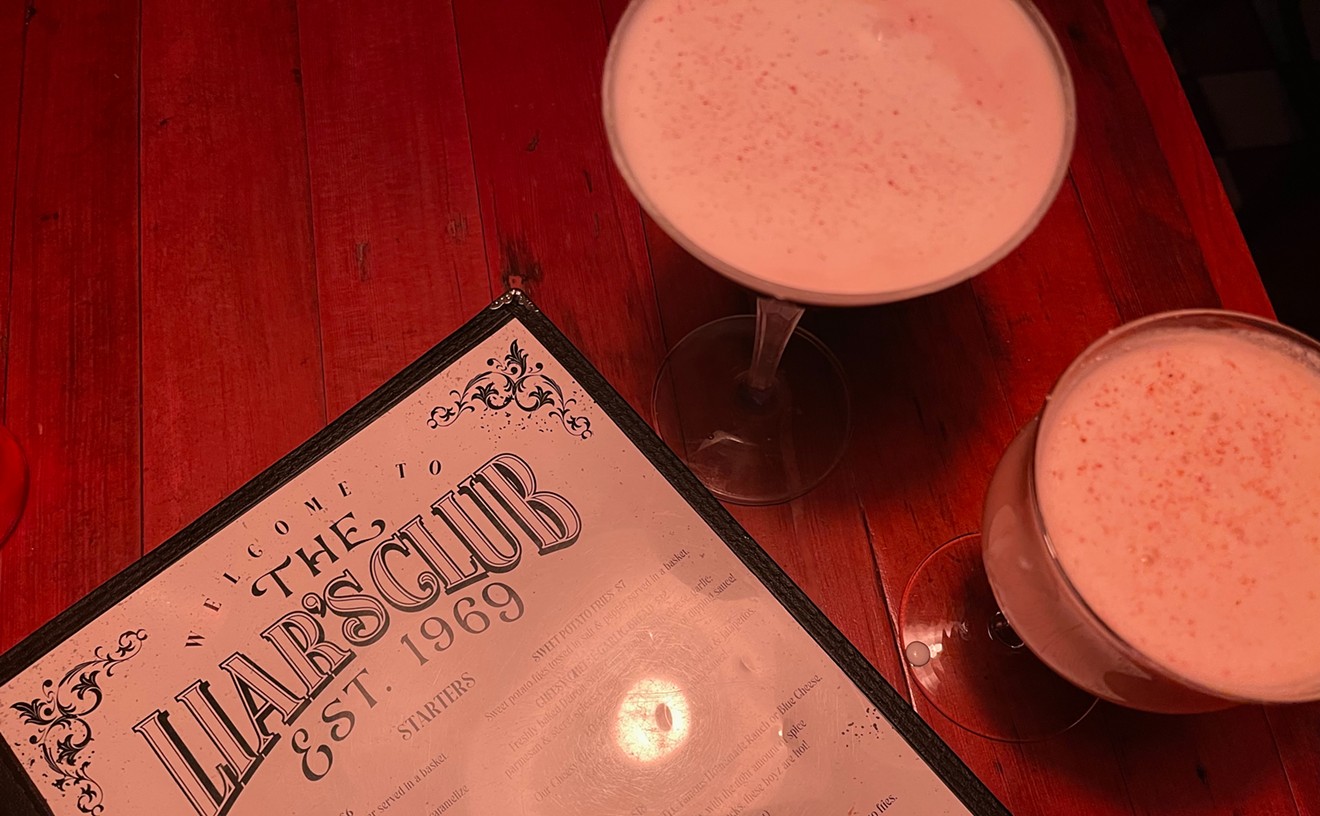One trip to the Desert Botanical Garden bookstore and you'll be full of ideas for your own garden. Some are practical and others require winning the lottery or moving. Luckily, they carry Concrete Garden Projects by Malin Nilsson and Camilla Arvidsson, a book that not only serves as inspiration via beautiful photos but also provides easy-to-follow DIY instructions on how to make everything from small pots for plants to a concrete barbecue.
You're thinking, concrete? First thing, concrete is pretty sturdy, and if you've ever had your favorite pot weathered by the Arizona sun, you'll soon realize that concrete is a great choice. Concrete also is very easy to work with, and nearly anything can be made into a mold for concrete. Once finished, your plant and its greenery will create contrast with the gray concrete and just looks cool.
See also: - Boho Farm and Home's Caroline Van Slyke Offers Tips on Gardening in Phoenix - How To Make the Best Mint Julep, Ever
I decided to try my hand at a simple project: create a medium-size concrete herb pot with two separate areas, one for lemon verbena and one for mint. Mint should generally be separated from other herbs as their root system is extensive and can "take over" if you're not careful. To my shock, this book's instructions were pretty accurate, and the project took less than an hour, excluding drying time.
Making this herb pot is a lot like baking. Getting everything ready, follow the instructions and then work in the right order. For this project, you'll need concrete (quick mix concrete works as does the more commercial concrete), water/hose, a paint brush, cooking oil, a large container and two small containers.
Additionally, if you want drainage hole, use a straw or a found object to mark the hole and ensure concrete doesn't enter the area. It also helps to have a cinder block or heavy weight around -- but rocks work well for this purpose, too. Ensure you have a clean and level workspace; preferably a waist high table, like a potting table.
Setup For this project, you'll need one larger container and two small containers. Make sure that the two small containers fit comfortably inside the large container. The large container is your main mold, so there needs to be space for sturdy walls to form between the objects. The smaller containers are the interior molds. I used some terra cotta- colored "pots" made of sturdy plastic found at a local hardware store. An advantage here is that they already had openings for drainage and they came in a variety of sizes.
First Steps Use a paint brush to thoroughly coat the inside of the larger mold and the outside of the smaller molds with cooking oil. It's just like baking; anywhere there is oil- the concrete won't stick. Now, mix up your concrete. It's roughly two parts concrete to one part water, the final product should be like a thick batter. Keep in mind that concrete, especially here in dry Arizona, sets quickly. I mixed my concrete with a garden spade in an old bucket.
If you're making drainage holes, decide now where you're going to place the straws; it's a good idea to slide them into place and have a friend hold them in place while you pour concrete. If you use something more substantial like a pipe, you may not need help. Either way, ensure they are "oiled up."
Pouring the Concrete Fill the larger mold with concrete to about 1 1/2 inches from the top. Shake a bit to eliminate air bubbles and level the pot. Now, push the smaller molds or pots you've oiled the outside of, into the center of the concrete in the large mold. Leave an adequate thickness for the bottom of the planter to form and on the boarder of the smaller containers. To keep the drainage opening, push the small molds into the larger mold/pot only after sliding the straw in the small pot's bottom opening. Ensure the concrete doesn't overlap the side of the large container, making it hard to remove once it has dried.
Walk Away To ensure the small molds stay at the desired place and height in the large pot, you'll need to weight them so they don't "float up" in the concrete. I just set a cinder block on top but you can place small rocks in each of the smaller pots. Let the concrete set for 24 to 48 hours. It should be a light gray color when it's dry. You might want to cover the area in case something blows near the area and sticks to the top.
Final Touches Once dry, gently remove concrete product from the molds. You can smooth rough edges with a stone or file or just leave as it!
Notes... When putting the small molds into the concrete in the big mold, be sure to center them, one of my smaller molds got too close to the side of the large pot and resulted in a slightly broken area. Since mint has a large root system -- I should have made one area larger or deeper than the other, but my small molds were both the same size. It is advisable to wear a handkerchief or face mask to avoid breathing in the concrete dust. Also, once concrete gets wet it will stick everywhere, so a plastic tarp is advised and pets should be kept away from the project site. Additionally, pay attention to how much concrete you mix -- you don't want to end up with a bunch of mixed concrete and nowhere to put it.










